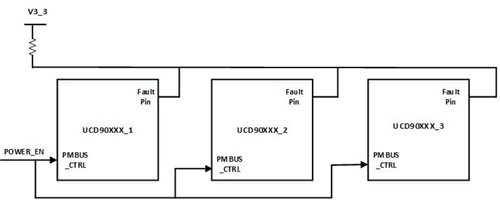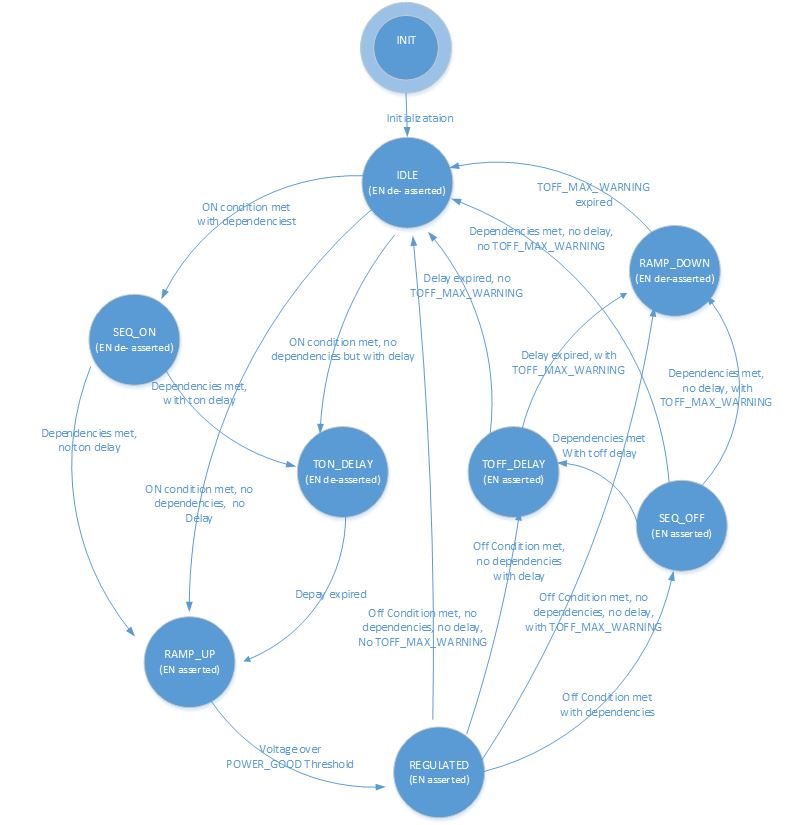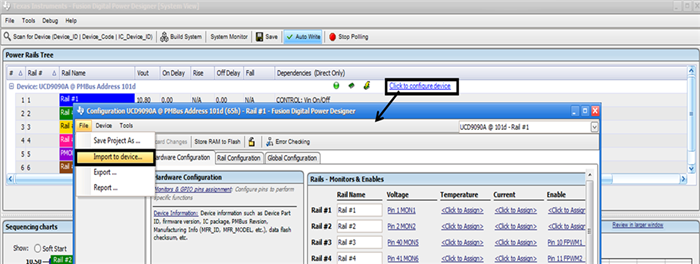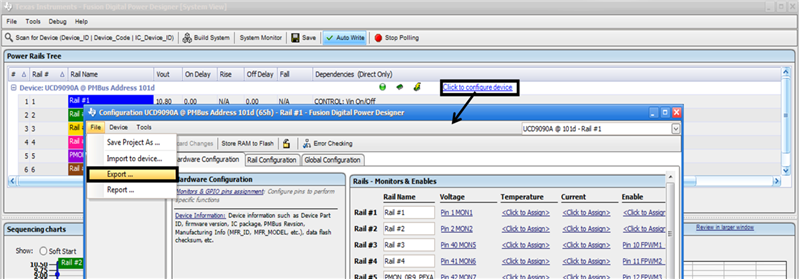SSZTA06 july 2017 UCD9090 , UCD9090A
Electronic systems that include a central processing unit (CPU), digital signal processor (DSP), microcontroller (MCU), field-programmable gate array (FPGA) or application-specific integrated circuit (ASIC) can have multiple voltage rails and require certain power on/off sequences in order to function correctly. TI’s UCD9090A power-supply sequencer and monitor with Advanced Configuration and Power Interface (ACPI) support can control up to 10 voltage rails, ensures correct power sequences during both normal and fault conditions, and includes a dedicated fault pin to easily cascade multiple devices.
The UCD9090A is an upgrade to the former UCD9090 (listed as not recommended for new designs [NRND]). In this post, I will explain the differences between the two devices, including their operation and features, and how to migrate from the UCD9090 to the UCD9090A. Table 1 lists the features included with the new UCD9090A.
| Features | UCD9090A | UCD9090 |
|---|---|---|
| Fault pin (enables single to cascading multiple UCD9090A devices) | Yes | No |
| General Purpose Input (GPI) fault response | Yes | No |
| GPI debugging | Yes | No |
| Rail state | Yes | No |
| Fault/peak logging disable | Yes | No |
| Logic General Purpose Output (LGPO) sequence on/off dependency | Yes | No |
| Non-volatile (NV) fault log | 26 | 30 |
| Rail sequence on/off timeout | 140m | 32s |
| Cold boot mode | Yes | No |
What Is a Fault Pin?
 Figure 1 Example Using a Typical Fault Pin
Figure 1 Example Using a Typical Fault PinWhat Is the GPI Fault Response?
What Is GPI Debugging?
What Is the LGPO Sequencing On/off Dependency?
What Is the Rail State?
 Figure 2 Rail State Machine Diagram
Figure 2 Rail State Machine DiagramWhat Is Cold Boot Mode?
 Figure 3 Cold-boot Processing Call
Figure 3 Cold-boot Processing CallWill TI Continue to Offer the UCD9090?
Migrating from the UCD9090 to UCD9090A
- Install www.ti.com/tool/fusion_digital_power_designer and open the latest Fusion Digital Power Designer GUI.
- Import the old UCD9090 project (.xml) into the UCD9090A. See Figure 4.
 Figure 4 Import the UCD9090 Project File
Figure 4 Import the UCD9090 Project File3. Once you have successfully imported the project, use the export function from the Fusion Digital Power Designer GUI to regenerate the .csv/.hex file. See Figure 5.
 Figure 5 Fusion Digital Power Designer GUI Export Settings
Figure 5 Fusion Digital Power Designer GUI Export Settings4. Use the .csv/.hex file generated from step No. 3 for any programming utilities.
Hopefully this blog post provides you with a good comparison between the two devices and will help you migrate from the UCD9090 to the UCD9090A. If you have any additional questions, please post a response below or submit through TI’s E2E™ Community Sequencers forum.